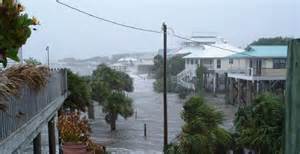
by Rick O'Connor | Sep 23, 2015
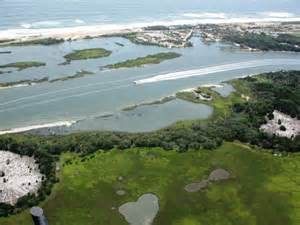
This area along Florida’s east coast is experiencing coastal flooding.
Photo: University of Florida
As we come towards the end of National Estuaries Week we will now look at some issues our estuaries are facing. Sea level rise is one that generates a variety of responses from the public. For some it is of concern, something we need to be planning for and need to spend more research dollars on to improve our models to understand it. For others, it is a problem for the back burner; yea, it is happening but the changes are over a long period of time and the serious impacts will not occur for a while – and we have more pressing issues to deal with. The old “it’s not a problem until it’s a problem” form of planning. Others still understand it but do not believe the models and do not believe the impacts will be very serious – thus warrants little or no planning. And there are those who do not believe climate change and sea level rise is actually occurring. They see no tangible evidence of any changes. Each year feels like the last – it just is not happening.
A couple of years ago I was part of a team that conducted a series of focus group meetings with residents and businesses who live and work on our barrier islands. The focus of the discussion was to determine what the coastal residents were most concerned about in terms of climate change, sea level rise, and coastal resiliency. The majority of the participants did not deny climate change but were not concerned about planning for it at this time; they had other issues were more pressing… like coastal flooding and the national flood insurance plan – which plans to increase rates for properties in flood prone areas. Ironically, this issue is tied to climate change and sea level rise. They were more concerned about it than they realized. And we did have a few who asked the question – “is there any science that supports the notion of climate change?” Let’s start there… is there any science to support this?
Yes… this link to NASA (http://climate.nasa.gov/evidence/) is a page developed to help the public better understand what the science says about this. Yes, there is evidence that the carbon is increasing in our atmosphere, that global temperatures are rising, as are sea levels. Many are experiencing some of the changes that were discussed in the 1980’s. Some areas are seeing more rain, others more drought. Gardeners in parts of the country are noticing that things they use to do in April, they now do in March. More tropical plants and animals are migrating north – there are at least three records of red and black mangroves growing the Florida panhandle and a snook was caught a couple of years ago at Dauphin Island, Alabama. These subtle changes have been noticed by some. Others, such as those in southeast Florida, have witnessed more direct evidence, such as portions of A1A going underwater during extreme high tides. But there is science to support this.
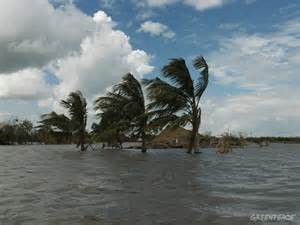
Islands in the south Pacific who are dealing with the impacts of sea level rise during storm events.
Photo: Greenpeace
What is causing sea level rise?
Well, according to a document published by Florida Sea Grant there are three general causes.
- Temperature – as the atmosphere and oceans warm the water expands thus causing the sea level to rise. This thermal expansion has accounted for about 25% of the sea level rise we have witnessed; between 1993 and 2010 it accounted for 40% of it.
- Ice melt – 60% of the current rise in sea level has been due to the melting of land based ice; such as glaciers.
- Land fall – for a variety of reasons, some coastal land masses have actually dropped; thus forcing the sea level to rise.
What do the current models predict for future sea level rise?
Most of the models are predicting an increase between 1.5 and 4.5 feet, depending on where you are, by 2100.
So what?
Again some coastal communities are experiencing impacts now. South Florida Water Management District is currently replacing all of their gravity flow drains due to the fact that sea level has risen enough that they only work at low tide. Monroe County (Florida Keys) is now replacing their vehicles at a faster rate due to constant driving through salty flood waters. Many Florida coastlines are now experiencing saltwater intrusion of their freshwater supply. This is partially due to the over consumption of that resource but it is also due to sea level rising introducing salt water to these systems. There has been increased flooding in many parts of the country, including the Florida Panhandle.
So what does this mean for our local estuaries?
As we have said, sea level rise has occurred before – will this be a problem for our estuarine habitats? Generally ecosystems adjust to environmental change over time but they cannot respond if these changes occur too fast. Scientists have determined that an increase of 0.13” of sea level/year will flood our coastal marshes and we may lose them; currently the rate is about 0.11”/year. It is believed that our barrier islands will “roll” landward but science is not sure how fast this will happen. There may be changes in species composition within our estuaries – which could be good or bad – and there is certainly room for the expansion of invasive species.
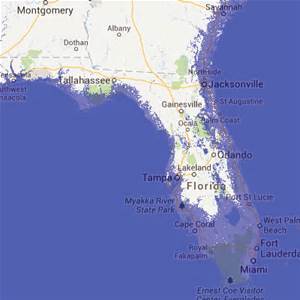
A graphic indicating the potential flooding of Florida.
Graphic: Green Policy 360
How has government responded?
Federal and county governments have responded – the state… not so much. According to Thomas Ruppert (Florida Sea Grant) the local governments have done the best job planning for these future changes. Many areas in the state now require some form of sea level rise planning in all new development projects. At the very least coastal communities should look at future development plans and think long term as to where flooding may become a bigger issue.
“The times they are a changing…”

by Rick O'Connor | Sep 22, 2015
Many may not know that one of the reasons the Spanish selected Pensacola as the site of for their first settlement in the Gulf of Mexico was the deep water port. As mentioned in the first issue in this series, the estuaries of the Gulf of Mexico are drowned river valleys and are typically very wide and very shallow; ranging from 10-12 feet. Pensacola was different – the average depth was close to 30 feet. The Spanish immediately saw the advantage of this – being able to harbor their entire fleet within the bay and be protected from hurricanes; which of course did not work out for Don Tristian de Luna… but the deep water port was still a draw.
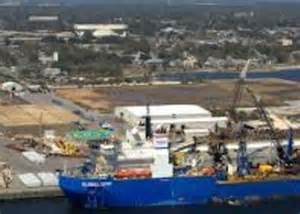
Port of Pensacola. one of the oldest on the Gulf Coast.
Photo: University of West Florida
William Bartram was amazed at its size and depth when he visited in the late 18th century commenting that “Pensacola Bay could harbor all of the fleets of Europe”. The United States did not miss out on this fact either; John Quincy Adams ordered a U.S. Navy Yard to be built in Pensacola after it became an official territory – which would later be the first Naval Air Station as well.
With the development of dredging technology some of the other estuaries within the Gulf became targets for port activity. The Port of Tampa, Port of Panama City, Port of Mobile, Port of Biloxi, Port of New Orleans, and one of the busiest ports in the country – the Port of Houston all grew and prospered.
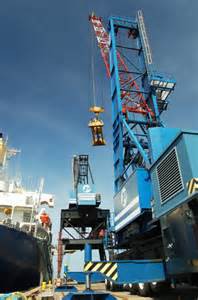
Port of Panama City.
Photo: Port of Panama City
What do these ports mean to the communities that share the bay with them? Well commerce… taxes… and jobs for starts. In 2012 a report showed that the Port of Houston provided 1,026,820 jobs, $4.5 billion in taxes, and a economic value of $178.5 billion; most in the Houston area. In addition to container ships, Houston deals with the oil industry (including refineries), asphalt and cement, storage, and ship repairs. Though the other ports may not generate such high numbers as Houston, they still generate tons of cargo movement and have economic value to the community in the billions of dollars. Many of these ports have now embraced the cruise ship industry and are looking at opening maritime history attractions to the area.
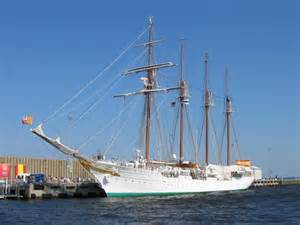
The Spanish vessel Panfilo de Narvaez visits Gulf Coast ports frequently giving locals a feel for the “old days” of commerce.
Photo: University of West Florida
All of these ports are located in protected estuaries. Though many of them require dredging, which is certainly controversial with some, the economic benefits are an important piece to their local economies. As a kid one of my favorite activities was to visit the Port of Pensacola and try to identify the flags of all of the nations that entered. I was always amazed when the tugs pushed these “big boys” out and loved watching them quietly steam past Ft. Pickens and out to the open Gulf. I shared this experience with my son and hope to with my grandkids. I encourage to learn more about your local ports; what products they move and the economic impact to the panhandle region. Ports are special places.
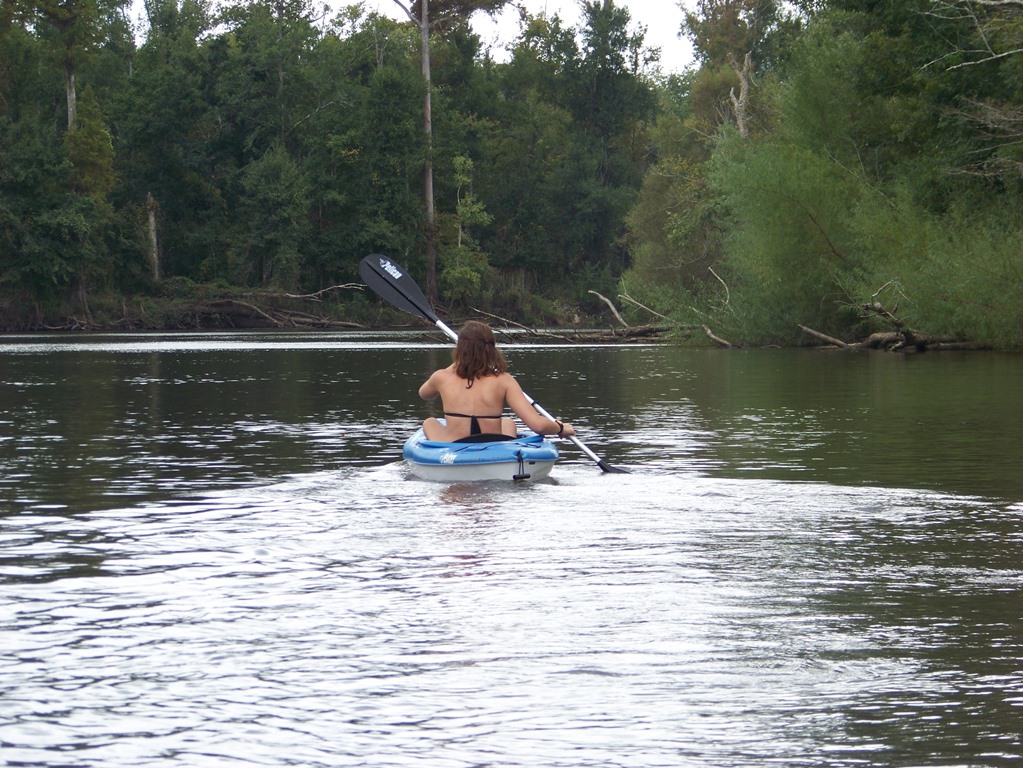
by Rick O'Connor | Sep 21, 2015
A couple of years a few agencies in south Alabama put together something they called the Alabama Birding Trail. It was a relatively simple idea really – they developed a brochure that marked different locations where visitors could enjoy birding in the two county area. They had large signs posted at those locations so that the visitor knew they were at the correct location. There seemed to be a need for this with some vacationers and they provided… It was a big success. More and more visitors were using the trail. It became so popular they that conducted a survey and found that about 40% of the visitors who come to our Gulf coast are looking for outdoor/wildlife adventures to do. Ecotourism is becoming more and more popular.
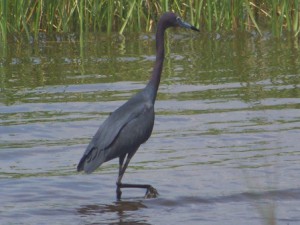
A heron exploring a local salt marsh for food.
Photo: Molly O’Connor
The panhandle is no different. Each year hundreds of thousands to millions of visitors come to our beaches. There is no doubt that we have some of the most beautiful beaches in the world, and they are a huge draw, but we have a lot of outdoor adventures to provide them as well. From scalloping in St. Joe, to snorkeling the jetties in Panama City, to fishing in Destin, to paddling in Navarre, to dolphin cruises in Pensacola the panhandle provides a wide variety of activities for both the local residents and visitors to enjoy – and employment for many.
So what does this have to do with estuaries?
Well, for most of these businesses a healthy wildlife population is needed. A dolphin cruise with no dolphin is not much. Visitors coming to stay on our beaches will certainly enjoy the white sand and emerald waters. They will return home with pictures and stories of how beautiful it was and how they hope to return – but if they saw a sea turtle that week, or went snorkeling and found thousands of tropical fish to view, or kayaked over a lagoon and found horseshoe crabs or stingrays… the stories get better and their urge to return grows. Wildlife and healthy estuaries are good for business – for everyone.
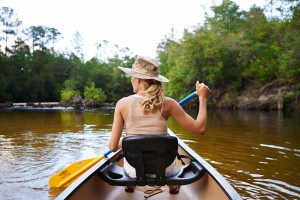
Paddling Blackwater River.
Photo: Adventures Unlimited
In 2014 the Escambia and Santa Rosa county extension offices launched a program called Naturally EscaRosa to help both locals and visitors locate both agritourism and ecotourism businesses in the two county area. The sight provides information on camping, hiking, fishing, sailing, snorkeling, biking, wildlife viewing, and farm tours (of which the popularity is growing across the country). Most of these depend on a healthy bay. Health advisories, fish kills, and loss or degradation of habitat are all problematic for the ecotourism industry. Snorkeling and finding no scallops, paddling over a lagoon and seeing no wildlife, or a slow fishing day on a charter will obviously hurt business – and remember the spin-off’s such as hotels and restaurants as well.
Estuaries have certainly benefitted this industry. From providing a nursery ground for the species we are trying to view or catch, to paddling through a peaceful salt marsh to get away from the hustle and bustle of everyday life, estuaries have been an important part of our lives. And the sunsets… don’t forget the sunsets.
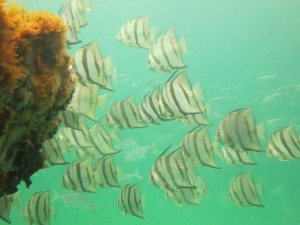
Spadefish on a panhandle snorkel reef.
Photo: Navarre Beach Snorkel
We encourage all locals and visitors to get out and enjoy the beauty of our bays. As the beach season ends the crowds are down, the weather is cooler, and it is a perfect time to venture out. For information about different activities in your area contact your local tourism board, or your county extension office.

by Rick O'Connor | Sep 20, 2015
Yea, seafood… who doesn’t like seafood… actually, based on a small scale survey I conducted with marine science students over the last 28 years I have found a slight increase in the number of those who do not. Curious about this, I followed up by asking whether their concern was seafood safety or other. Almost all said they just did not like the taste. Okay… I can take that… there are something I do not like either BUT I LIKE SEAFOOD. The survey also showed that almost every year with young/old or male/female – shrimp was at the top of their favorite list. After shrimp the next 3-4 choices for males was some type of fish. For females it varied – fish, lobster, calamari, to name a few.
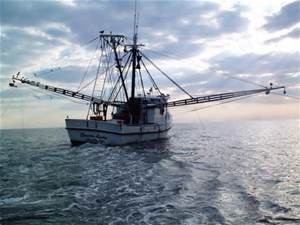
Shrimping depends on healthy estuaries.
Photo: NOAA
So what does this have to do with estuaries…
Well, you may not know this but 90% of the commercial important marine species require estuaries for at least part of their life cycles. Just as humans select a neighborhood to live and raise their kids based on safety and schools – “fish parents” find everything they want for their “kids” in an estuary. They are shallow – allowing light to reach much of the bottom where submerged plants, like seagrasses, can grow. These seagrasses provide hiding places and a place for small algae to attach – which is an important food source for many of them. There are other places for them to hide as well – emergent salt marshes and oyster reefs are biologically very productive habitats. Many of the developing larva and juveniles require lower salinities to begin and complete their life cycles; venturing to the open Gulf only when they have developed a tolerance for the higher salinities. The freshwater discharge not only lowers the salinity it also brings nutrients. These nutrients, along with the sunlight reaching much of the water column, produce an abundance of microscopic plankton – food for the young. The nutrients, thermal mixing, low salinities, and variety of habitats provide a combination for one of the most biologically diverse ecosystems on the planet – a great place to grow up… and much of it we enjoy eating.
Most of what we consume in the seafood world is divided into shellfish and finfish. Some of it is harvested and sold commercially, some we collect recreationally. In the shellfish world we are talking mollusk and crustaceans – two of the most popular seafood groups on the planet. The mollusk include snails, oysters, clams, mussels, scallops, and cephalopods like squid and octopus. Many of these species live in our estuaries their entire life cycle. Most are slow moving creatures – if they move at all – and have provided a living for some humans, recreation for many, for decades – though the landings of these species are on the decline… more on this in a later issue.
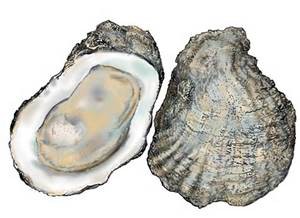
Oysters are one of the more popular shellfish along the panhandle.
Photo: FreshFromFlorida
Crustaceans include the ever popular gulf shrimp. We actually have three different species of bay shrimp we like – white, brown, and pink shrimp. There are other varieties found offshore we are now consuming, but these have been the big three. Blue crab – my personal favorite – is another popular crustacean. Though these are still harvested commercially, “crabbing” with your kids is a long time popular panhandle activity – and the day always ends well with a great meal. Crustaceans are more mobile and conduct small migrations during their life cycles. Shrimp develop within the estuary and then move offshore for breeding where the incoming tide brings the larva back to the estuary. Blue crabs migrate to the head of the bay for breeding and the females return to the lower end of the estuary for egg development and larva release – they may enter the Gulf during this process but tend to stick to the bays for the entire cycle.
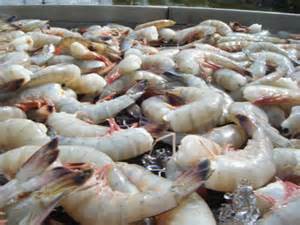
The famous Gulf Coast shrimp.
Photo: Mississippi State University
In the finfish world we are talking drum, snapper, grouper, trout, whiting, mullet, flounder, sheepshead, and many more. These species have provided both a living for the commercial fishermen and recreation for families for years. Many species breed and grow within the estuary while others make trips in and out of the bay to complete their cycles. In addition to commercial and family recreation charter fishing has increased as a business along the Gulf coast.
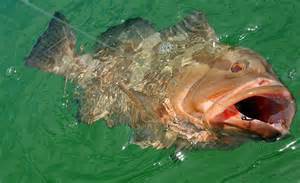
One of the more popular finfish – the grouper.
Photo: Bay County Extension, UF IFAS
We hope you and your family enjoy local seafood from our bays. There are several websites and apps, such as Seafood@Your Fingertips, that can help you locate local seafood – or you can go catch some yourselves! If harvesting recreationally be reminded that there are regulations and licenses required. You can read more about those at MyFWC.com.
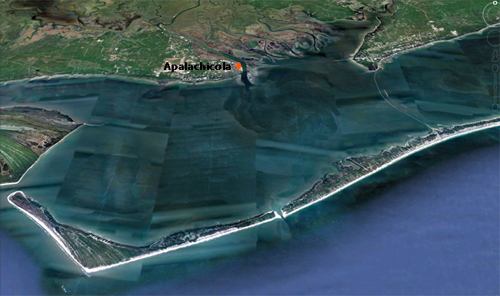
by Rick O'Connor | Sep 19, 2015
Welcome to National Estuaries Week! Each year in the fall NOAA and other agencies try to educate residents about estuaries. The vast majority of humans on our planet live on, or near, an estuary – many not realizing the importance those bodies of water have on our economy and quality of life. We live on them, consume food from them, swim in them, recreate on them, and maybe make your living from them. They are an integral part of our lives and many are under stress. Over the next seven days we will post articles discussing some of the benefits and problems our local estuaries are having. Let’s begin with What is an Estuary?
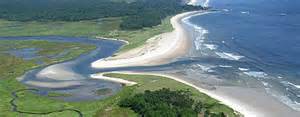
An estuary… where rivers meet the sea.
Photo: University of California.Berkley
Estuaries are defined as semi-enclosed bodies of water where fresh and salt water mix. Typically freshwater enters at the head of the bay. In the Florida panhandle most of our estuaries are fed by one of two types of rivers; alluvial and tannic. Alluvial rivers are large, fast flowing streams that begin far up in the watershed (Georgia or Alabama) and typically are quite muddy; Escambia, Choctawhatchee, and Apalachicola Rivers are examples.
Tannic rivers are generally smaller in size, flow slower over coastal flatwoods, and build up tannins from the decomposition of leaf litter that settles to the bottom due to the slow currents. Due to the high levels of tannin, these rivers general have a lower pH and “blackwater” “ice tea” coloration to them; Blackwater and Perdido Rivers are examples.
Freshwater from these rivers is less dense than seawater and tends to flow across the surface of the bay towards the mouth of the bay; where it meets the Gulf of Mexico. There are several types of estuaries found around the world and the ones in our area are drowned river valleys. They formed when ice from the last glacial period melted and flowed towards the sea. As they reached the coast areas of “low land” filled with water and became bays. Drowned river valleys typically are very wide and very shallow. Mobile Bay is 35 miles long, 10 miles wide, and not much deeper than 11 feet across its area. I remember as a kid scalloping in St. Joe Bay and being able to stand up at distance from shore that I could barely make out my car!
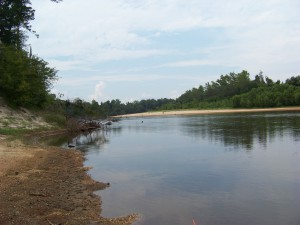
The Escambia River. One of the alluvial rivers of the Florida panhandle.
Photo: Molly O’Connor
As seawater enters the bay it tends to remain near the bottom and will “finger” it’s way towards the head forming two layers of water within the bay; freshwater on top – seawater on the bottom. This “fingering” movement is called a salt wedge and forms a halocline which impacts the distribution and diversity of aquatic species. On windy days the top and bottom layers will mix and the salinity of the bay becomes more brackish with no noticeable halocline; this too will impact the diversity and distribution of aquatic life. Creatures who live in estuaries must be hardy and prepared for drastic environmental change over the course of the day.
In the Florida panhandle our estuaries experience diurnal tides; 1 high and 1 low tide each day. The incoming tides are generally weaker than the outgoing ones; I have, more than once, been caught in an outgoing tide in Pensacola Bay… VERY difficult to swim out of.
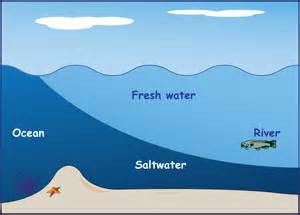
A salt wedge.
Graphic: NOAA
We have seven estuarine systems along the Florida panhandle; Perdido, Pensacola, Choctawhatchee, St. Andrew’s, St. Joseph, Apalachicola, and the Apalachee. Each is unique and important to their communities and provide benefits that are truly priceless. Enjoy the other articles we will post during National Estuaries Week and GO OUT AND ENJOY YOUR ESTUARY! It’s the perfect time of year for it.





















